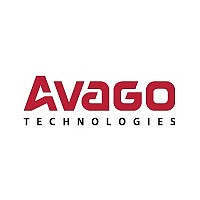HFBR-5301 Avago Technologies, HFBR-5301 Datasheet - Page 4

HFBR-5301
Manufacturer Part Number
HFBR-5301
Description
Fibre Channel 133 Mbd And 266 Mbd Transceivers In Low Cost 1x9 Package Style
Manufacturer
Avago Technologies
Datasheet
1.HFBR-5301.pdf
(12 pages)
Compatibility with Fibre Channel FC-0/1 Chip Sets
The HFBR-5301 and HFBR-5302 transceivers are compat-
ible with various manufacturers FC-0 and FC-1 integrated
circuits. Evaluation boards, which include the Avago
transceivers, are available from these manufacturers. The
Applications Engineering group in the Avago Optical
Communication Division is available to assist you with
implementation details.
Transceiver Optical Power Budget vs. Link Length
Optical Power Budget (OPB) is the available optical
power for a fiber optic link to accommodate fiber cable
losses plus losses due to in-line connectors, splices, opti-
cal switches, and to provide margin for link aging and
unplanned losses due to cable plant reconfiguration or
repair. Figure illustrates the predicted OPB associated
with the two transceivers specified in this data sheet at
the Beginning of Life (BOL). These curves represent the
attenuation and chromatic plus modal dispersion losses
associated with the 62.5/125 mm and 50/125 mm fiber
cables only. The area under the curves represents the
remaining OPB at any link length, which is available for
overcoming non-fiber cable losses.
Avago LED technology has produced 1300 nm LED
devices with lower aging characteristics than normally
associated with these technologies in the industry. The
industry convention is 1.5 dB aging for 1300 nm LEDs.
The HP LEDs will experience less than 1 dB of aging over
normal commercial equipment mission life periods.
Contact your Hewlett-Packard sales representative for
additional details.
Figure was generated with an Avago fiber optic link
model containing the current industry conventions for
fiber cable specifications and the Fibre Channel optical
parameters. These parameters are reflected in the speci-
Figure 4. Optical Power Budget vs. Fiber Optic Cable Length.
8
7
6
5
4
3
2
1
0
02
HFBR-5302, 62.5/125µm
HFBR-5302, 50/125µm
FIBER OPTIC CABLE LENGTH - km
0.5
HFBR-5301,
50/125µm
HFBR-5301, 62.5/125µm
1
1.5
fied performance of the transceiver in this data sheet.
This same model has been used extensively in the ANSI
and IEEE committees, including the ANSI X3T9.5 commit-
tee, to establish the optical performance requirements
for various fiber-optic interface standards. The cable
parameters used come from the ISO/IEC JTC1/SC 25/WG3
Generic Cabling for Customer Premises per DIS 11801
document and the EIA/TIA-568-A Commercial Building
Telecommunications Cabling Standard per SP-280.
Transceiver Signaling Operating Rate Range and BER
Performance
For purposes of definition, the symbol rate (Baud), also
called signaling rate, is the reciprocal of the symbol time.
Data rate (bits/ sec) is the symbol rate divided by the en-
coding factor used to encode the data (symbols/bit). The
specifications in this data sheet have all been measured
using the standard Fibre Channel symbol rates of 133
Mbd or 266 MBd.
The transceivers may be used for other applications at
signaling rates different than specified in this data sheet.
Depending on the actual signaling rate, there may be
some differences in optical power budget to do this. This
is primarily caused by a change of receiver sensitivity.
These transceivers can also be used for applications
which require different Bit Error Rate (BER) performance.
Figure 5 illustrates the typical trade-off between link BER
and the receivers input optical power level.
Figure 5. HFBR-5301/5302 Bit Error Rate vs. Rela-
tive Receiver Input Optical Power.
1 x 10
1 x 10
1 x 10
1 x 10
1 x 10
1 x 10
1 x 10
1 x 10
1 x 10
1 x 10
1 x 10
-10
-11
-12
-2
-3
-4
-5
-6
-7
-8
-9
CONDITIONS:
1. 133 & 266 MBd
2. PRBS 2
3. CENTER OF SYMBOL SAMPLING
4. T
5. V
6. INPUT OPTICAL RISE/FALL TIMES =
RELATIVE INPUT OPTICAL POWER - dB
-6
1.0/1.9 ns
A
CC
= 25 ˚C
= 5 V DC
7
-1
-4
-2
0
2





















